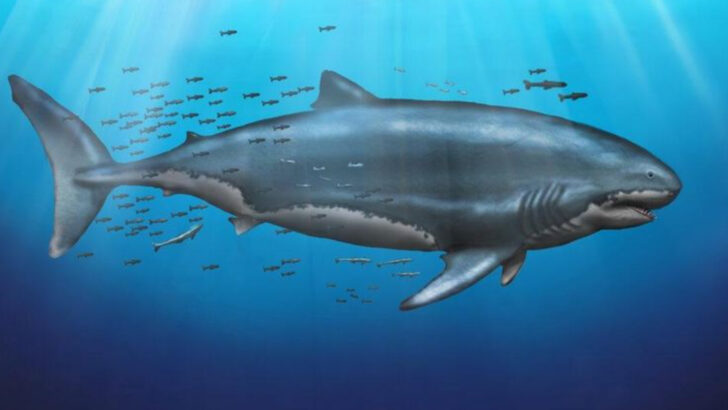Nature used to play by a wilder set of rules.
We’re talking birds with wingspans longer than a school bus.
Sharks the size of submarines.
And beasts so bizarre, you’d swear they were ripped from a sci-fi novel.
These weren’t background creatures.
They ruled oceans, roamed continents, and stared down anything that got in their way.
But they’re gone now—vanished through time, disaster, or the arrival of one very destructive species: us.
Still, their stories live on.
And if you think today’s animals are impressive, wait until you meet the ones we lost.
They’re proof that when it came to size, strength, and strangeness, nature never held back.
Giant Short-faced Bear
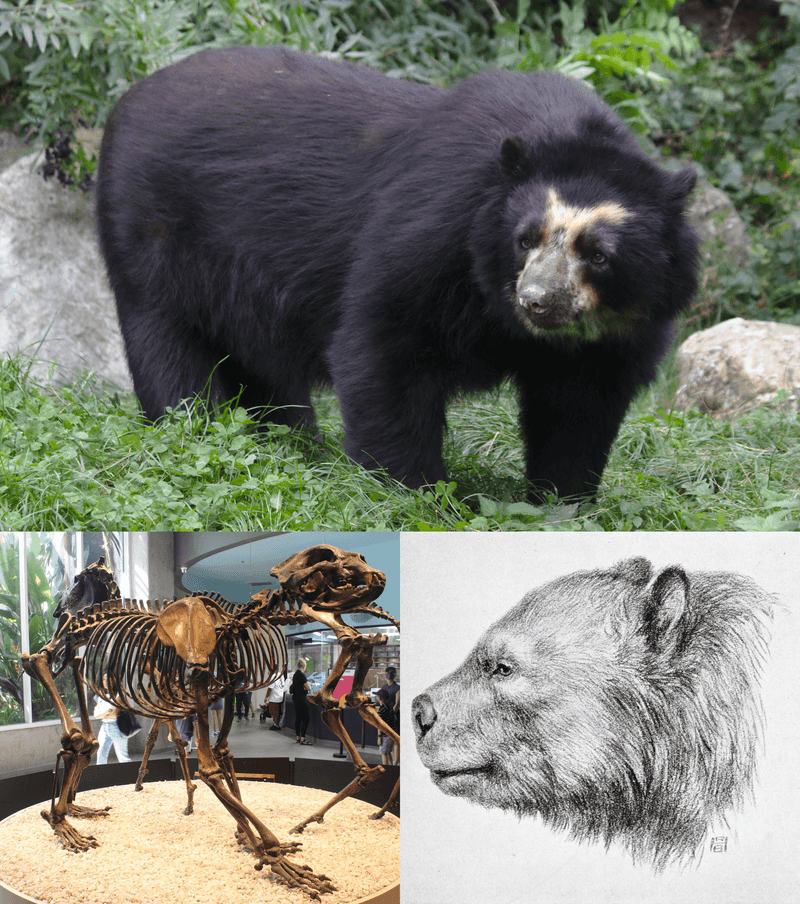
Imagine standing in the shadows of the Giant Short-faced Bear, a creature that dominated North America during the Pleistocene. Towering over most humans, it was built for speed and strength.
This bear had an imposing appearance, with long legs and a powerful stride, allowing it to chase down prey with ease. Its formidable presence on the ice age tundra made it a top predator.
However, its existence was cut short as the climate warmed and its prey became scarce. The Giant Short-faced Bear remains a symbol of nature’s once limitless potential.
Caribbean Monk Seal
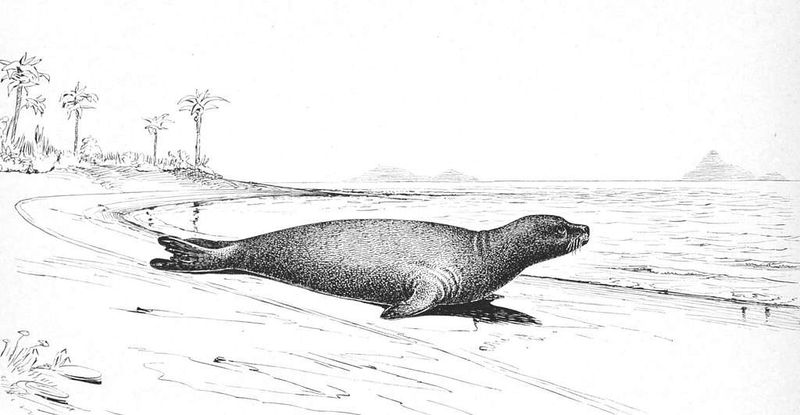
The Caribbean Monk Seal was once a serene presence in the warm waters of the Caribbean. Often seen basking on sunlit beaches, this seal had a gentle, curious nature.
It thrived in the tropical paradise, playing a vital role in the region’s marine ecosystem. Sadly, excessive hunting and habitat loss led to its decline.
By the mid-20th century, sightings became rare, and the seal was declared extinct. Yet, the Caribbean Monk Seal’s memory lingers, reminding us of the delicate balance in nature that once existed.
Megalodon
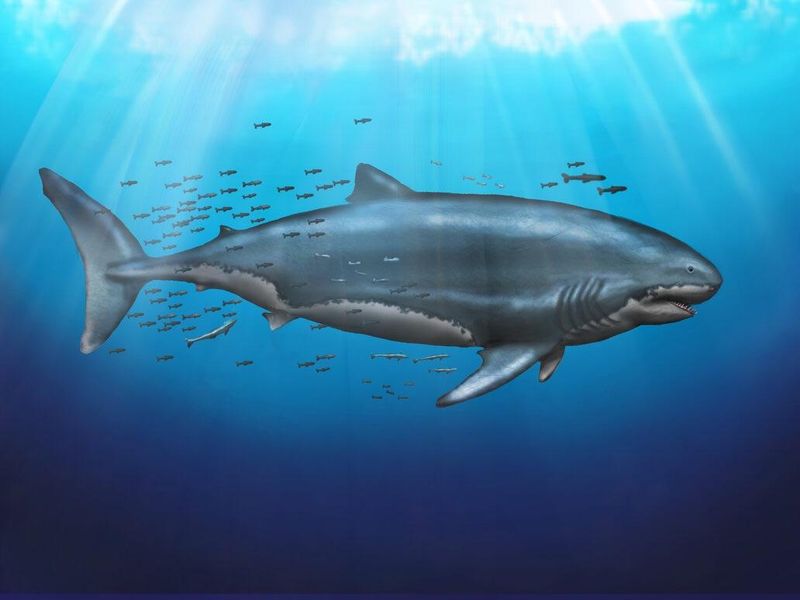
Imagine a shark so vast that its bite radius was larger than a human is tall. The Megalodon ruled the oceans millions of years ago, preying on whales and giant sea turtles. Its teeth, resembling steak knives, could crush bones effortlessly. Evolution crafted this apex predator to perfection, with adaptations for hunting in deep waters. Despite its fearsome nature, shifts in climate and prey availability led to its extinction. Today, its legacy lives on in myths and jaws of fossils adorning museum halls. This marine giant underscores nature’s remarkable ability to create unparalleled hunters.
Dodo
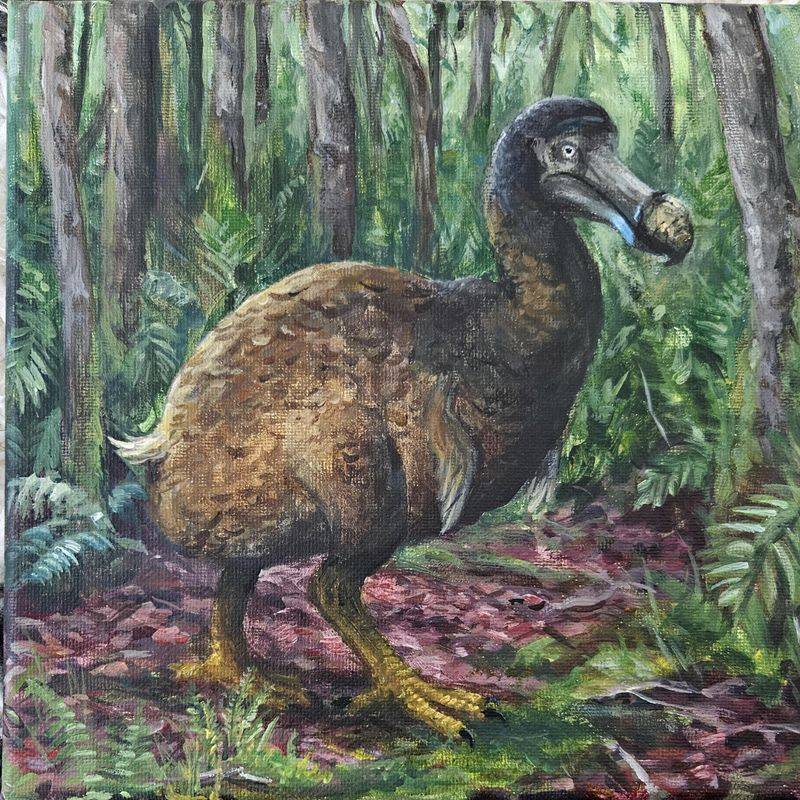
The Dodo, often caricatured as clumsy and naive, inhabited Mauritius. With no natural predators, it thrived, evolving into a flightless bird. Its gentle existence was shattered by human colonization and introduced species, leading to its swift extinction. Perhaps no other animal symbolizes the impact of human interference so poignantly. Today, the Dodo serves as a critical reminder of the delicate balance in isolated ecosystems. Its story compels reflection on conservation and the importance of protecting biodiversity. This peculiar bird, now only seen in art and literature, remains a symbol of lost innocence.
Tasmanian Tiger (Thylacine)
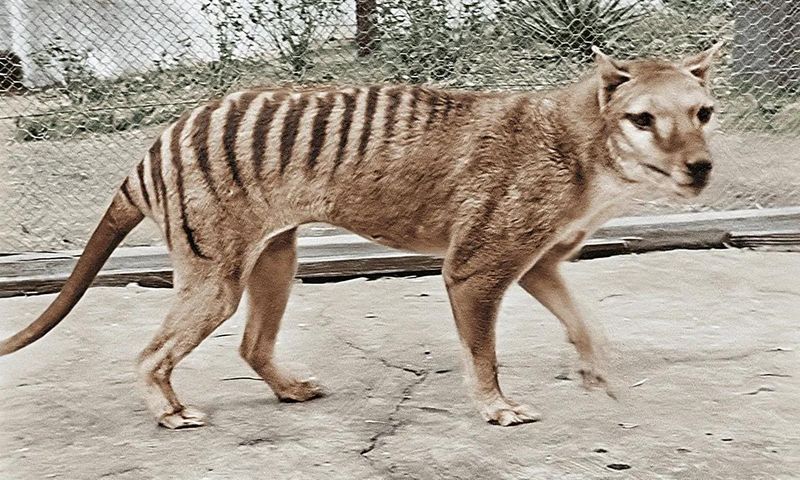
Known for its striking resemblance to both canines and marsupials, the Tasmanian Tiger was a top predator in Australia. Its distinctive stripes and stiff tail made it look like a creature of folklore. Despite its prowess, it fell to hunting and habitat destruction. The last known Thylacine died in captivity in the 1930s. Today, its image haunts the annals of extinction, a testament to human disregard for nature’s treasures. Efforts continue to resurrect its memory through DNA studies, sparking debates over de-extinction. This enigmatic creature challenges us to rethink our relationship with the wild.
Passenger Pigeon
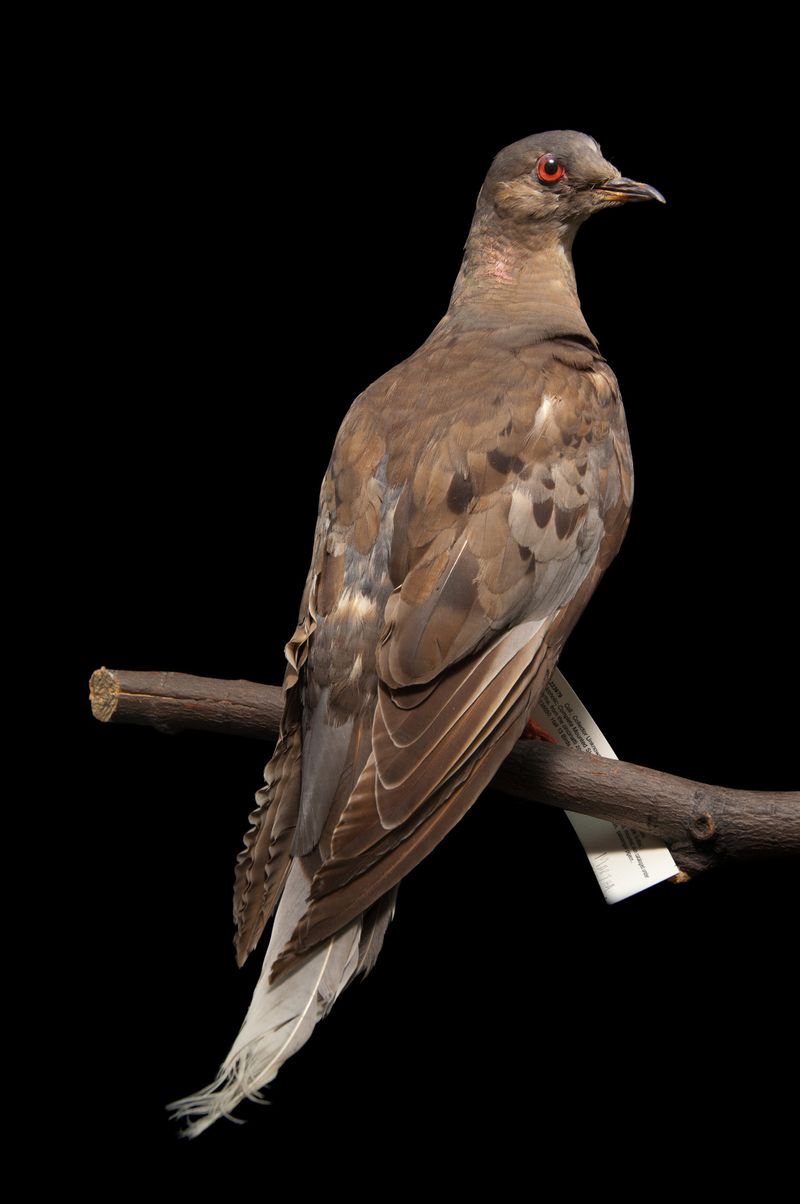
Once, Passenger Pigeons darkened the skies of North America with flocks so dense they blocked the sun. Their social nature and immense numbers were both their strength and downfall. Overhunting and habitat loss decimated their populations. By 1914, the last known pigeon, named Martha, died in captivity. Their extinction serves as a cautionary tale of overexploitation. Conservationists today draw lessons from their story, emphasizing sustainable practices. This species’ demise highlights how quickly abundance can turn to absence, urging us to cherish and protect our natural world. Their flights remain etched in historic memory.
Moa
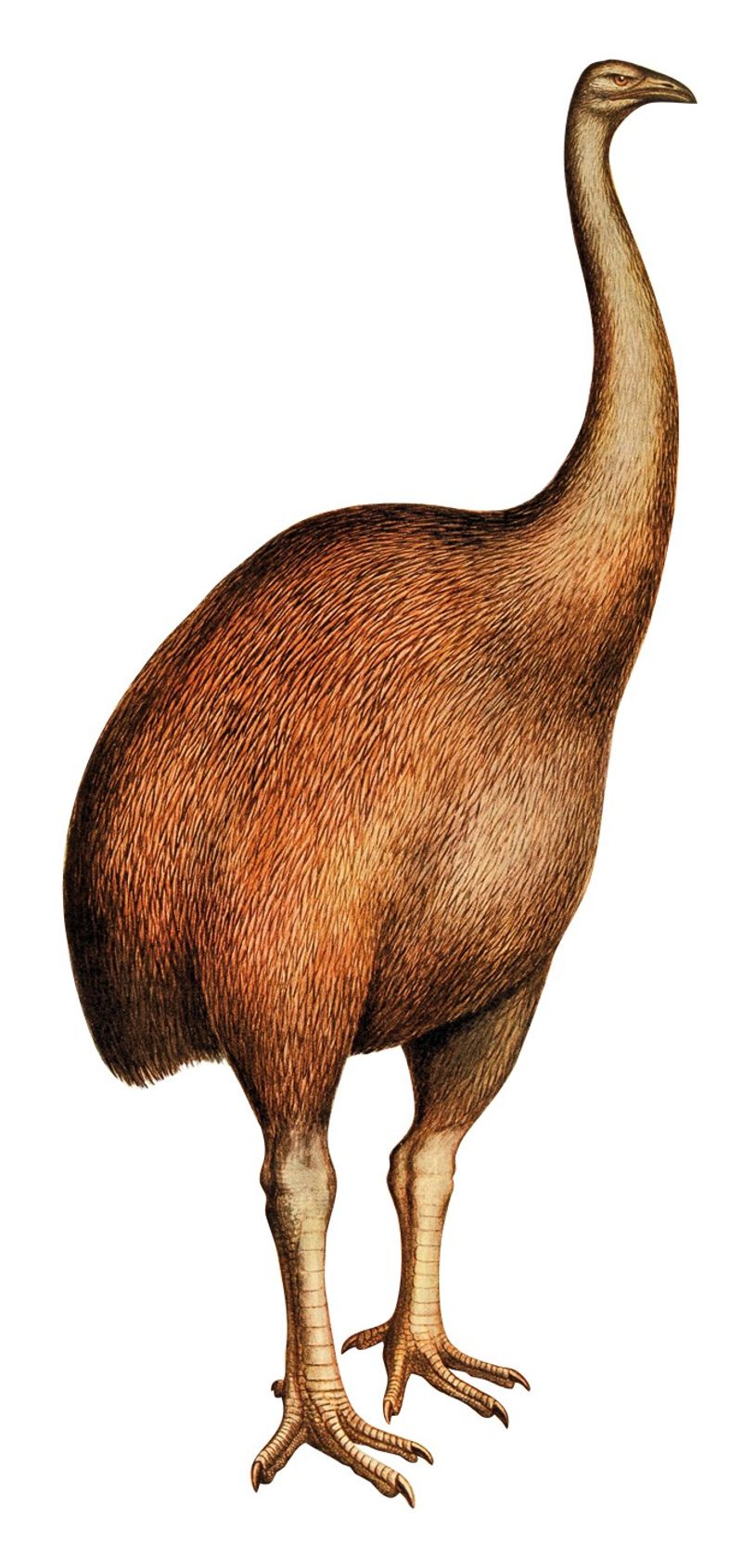
Moa were colossal birds that once roamed New Zealand, towering over their environment. With no wings, these herbivores thrived on the island’s vegetation. They vanished within several decades of human arrival, primarily due to hunting. Moa’s extinction led to significant ecological shifts in their habitat. Today, they remind us of human impacts on isolated ecosystems and the irreversible changes that can occur. Their bones and eggshells offer clues about their majestic presence. As we reflect on their existence, we gain insight into the delicate balance of life, urging mindful stewardship of our planet.
Irish Elk
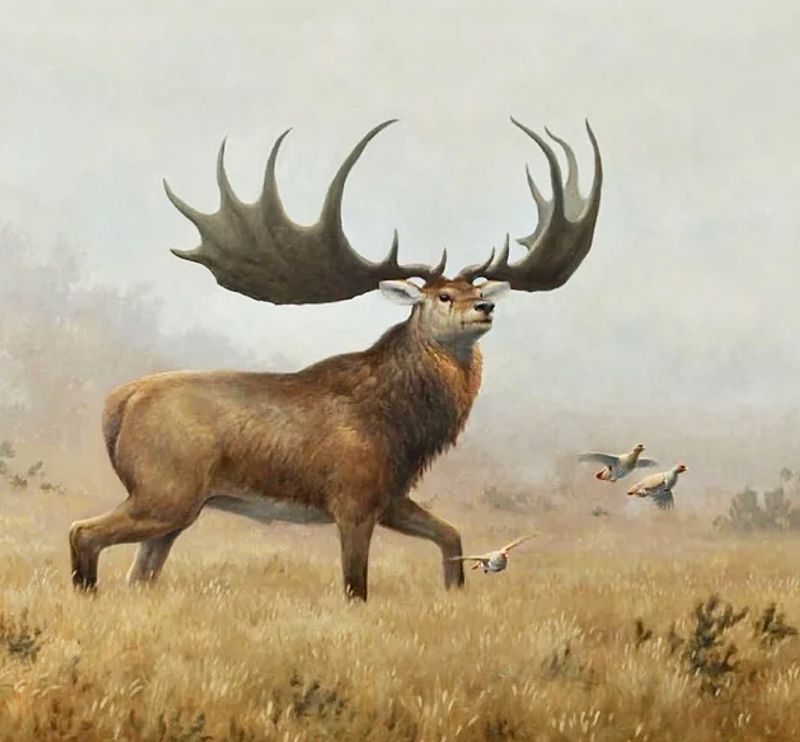
Known for its impressive antlers, the Irish Elk was a majestic creature of the Pleistocene epoch. It roamed across Europe and was not truly an elk but a giant deer. The sheer size of its antlers, spanning up to 12 feet, required substantial nutrients, which became scarce during climate shifts. The Irish Elk’s extinction echoes the relentless forces of nature and evolution. Its legacy persists in the bones and antlers unearthed today, captivating imaginations. This grand herbivore underscores the intricate dance of adaptation and survival. Its story offers a window into the past and nature’s vast possibilities.
Great Auk
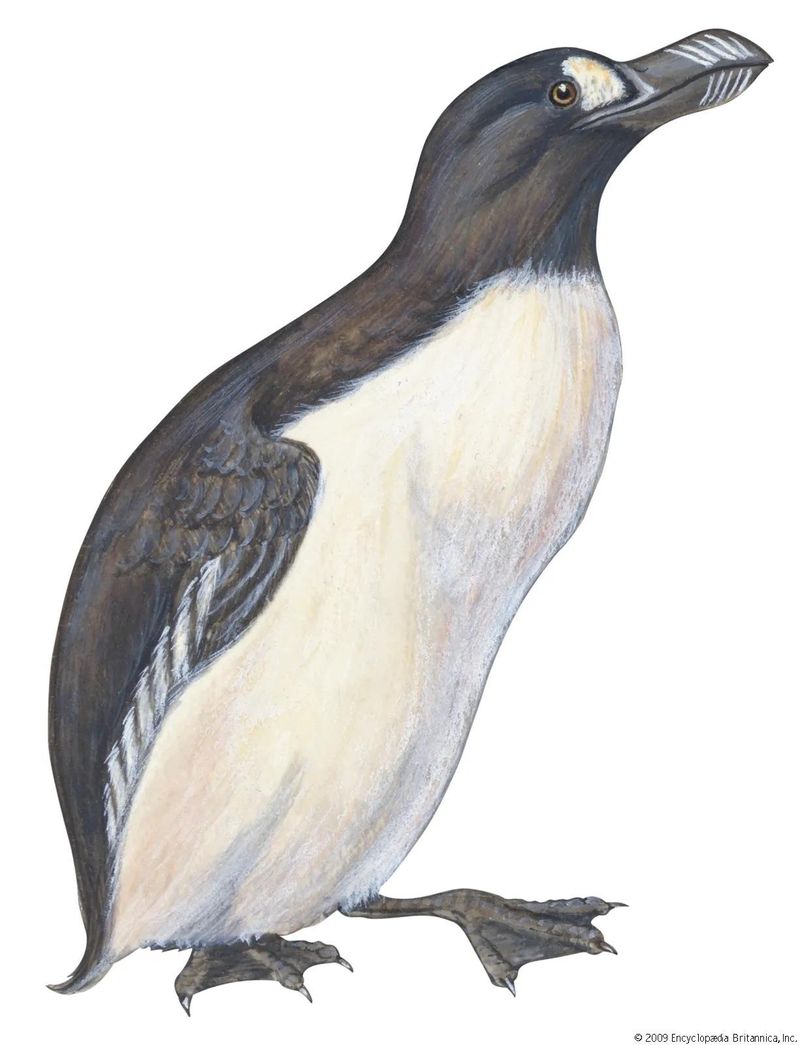
Standing nearly a meter tall, the Great Auk was the largest of the auks, thriving in the frigid North Atlantic. Its inability to fly made it vulnerable to human exploitation for feathers and meat. By the mid-19th century, it was hunted to extinction. The Great Auk’s fate serves as a stark reminder of the consequences of unchecked exploitation. Efforts to protect its habitat came too late. Today, the flightless bird’s story fuels conservation efforts worldwide. Its preserved specimens in museums continue to educate and inspire. This seabird’s tragic end calls for a collective reverence for marine life.
Steller’s Sea Cow
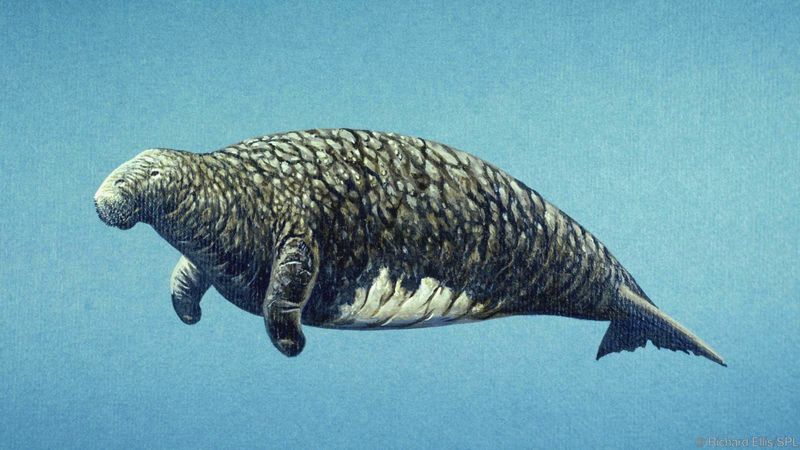
Discovered in the icy waters near the Commander Islands, Steller’s Sea Cow was a gentle marine giant. Growing up to 30 feet long, it subsisted on kelp, peacefully inhabiting coastal areas. Within 27 years of its discovery by Europeans, it was hunted to extinction. The Steller’s Sea Cow’s demise illustrates the rapid impact of human exploitation on vulnerable species. Its sedentary lifestyle and slow reproduction made it an easy target. Today, this creature represents the fragility of oceanic ecosystems. Preserved in records and illustrations, it urges us to safeguard marine biodiversity for future generations.
Quagga
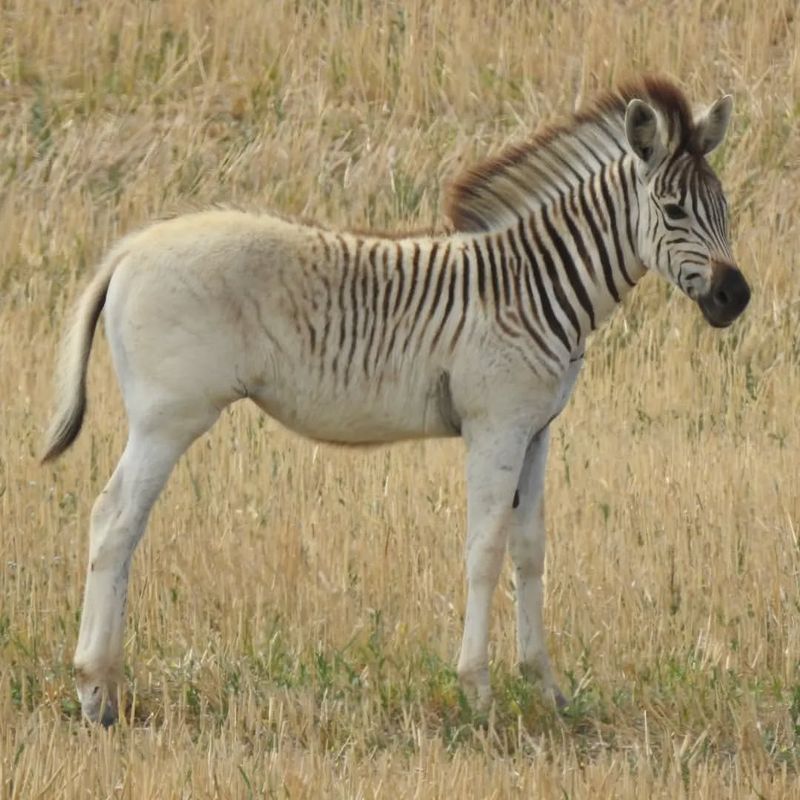
Appearing as a half-zebra, half-horse, the Quagga once roamed South Africa’s plains. Its distinct pattern of stripes faded along its body, setting it apart from its relatives. Overhunting and habitat encroachment led to its extinction in the late 19th century. The Quagga’s story reminds us of the loss of genetic diversity within species. Efforts to “bring back” the Quagga through selective breeding of zebras highlight the complex intersections of technology and conservation. As we ponder its existence, we are reminded of the beauty of biodiversity and the importance of maintaining it for future generations.
Woolly Mammoth
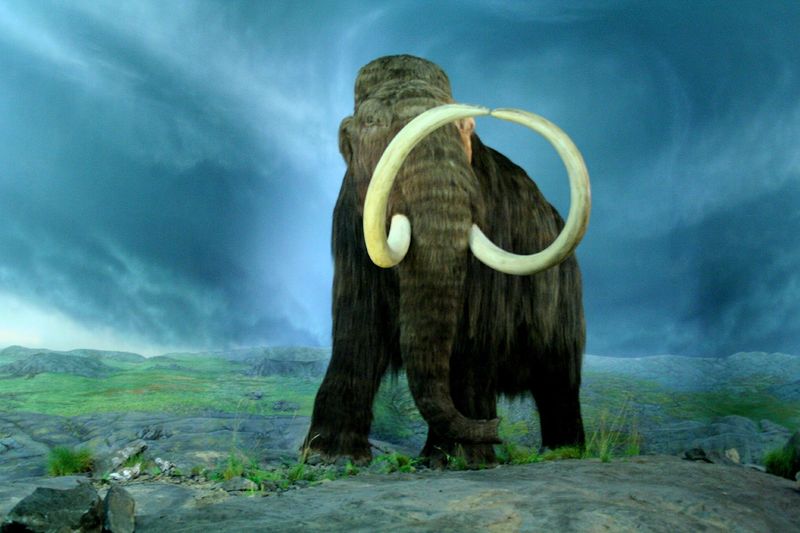
The woolly mammoth roamed the vast, icy tundras of the Northern Hemisphere. Covered in long, shaggy fur and equipped with massive tusks, these giants were well adapted to the cold. They used their tusks to dig through snow for food.
Their presence influenced the ecosystem profoundly, acting as mega-gardeners of their time. However, as the climate warmed and humans expanded, their numbers dwindled. The last known group survived on Wrangel Island until about 4,000 years ago. Woolly mammoths continue to capture our imagination, symbolizing the Ice Age’s grandeur.
Sabertooth Cat (Smilodon)
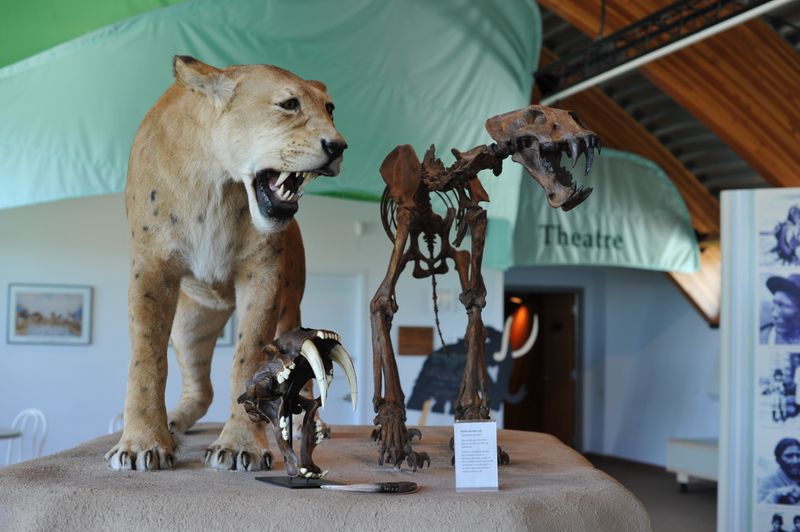
The sabertooth cat, with its formidable canines, was a top predator in its ecosystem. Found across the Americas, this feline could take down large prey with ease.
Despite its fearsome reputation, the Smilodon faced challenges during the changing climates of the Pleistocene. As prey species declined, so did the sabertooth cat. Fossil remains found in places like the La Brea Tar Pits offer a glimpse into their lives. These iconic predators are a testament to nature’s evolutionary prowess, showcasing adaptation and survival strategies.
Haast’s Eagle
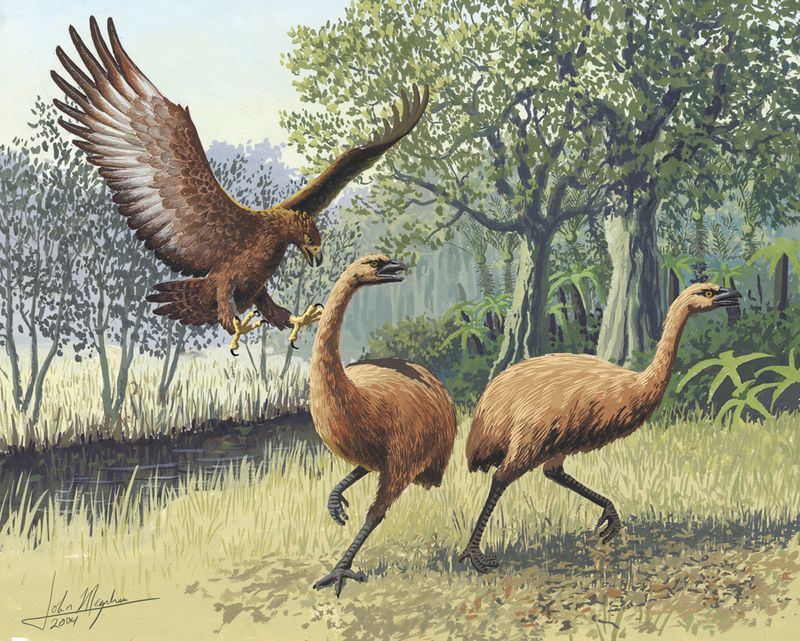
Once the dominant aerial predator of New Zealand, Haast’s eagle was the largest eagle to have ever lived. It preyed primarily on the flightless moa, showcasing a unique predator-prey relationship.
With a wingspan stretching up to three meters, it was a fearsome sight in the sky. Unfortunately, with the arrival of humans and the extinction of the moa, the Haast’s eagle also disappeared. This remarkable bird highlights the intricate balance of ecosystems and the impact of human colonization.
Andrewsarchus
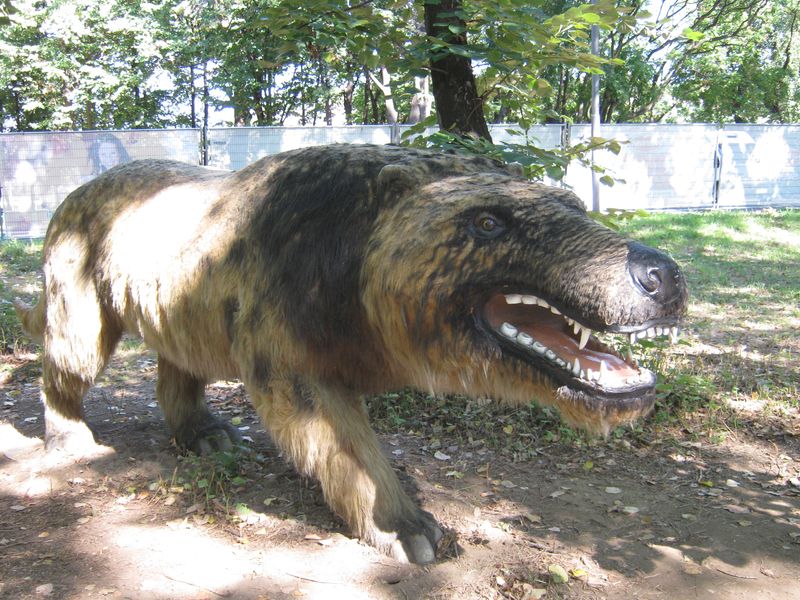
Andrewsarchus was a colossal, wolf-like carnivore that roamed the Eocene landscapes of Central Asia. Known primarily from a single skull, its full appearance remains enigmatic.
This predator likely fed on a variety of prey, possibly scavenging along coastlines. Its powerful jaws suggest it could crush bones with ease. Despite its formidable nature, Andrewsarchus remains a mystery, as no complete skeleton has been uncovered. This giant carnivore represents the unknown wonders of prehistoric life.
Terror Birds (Phorusrhacids)
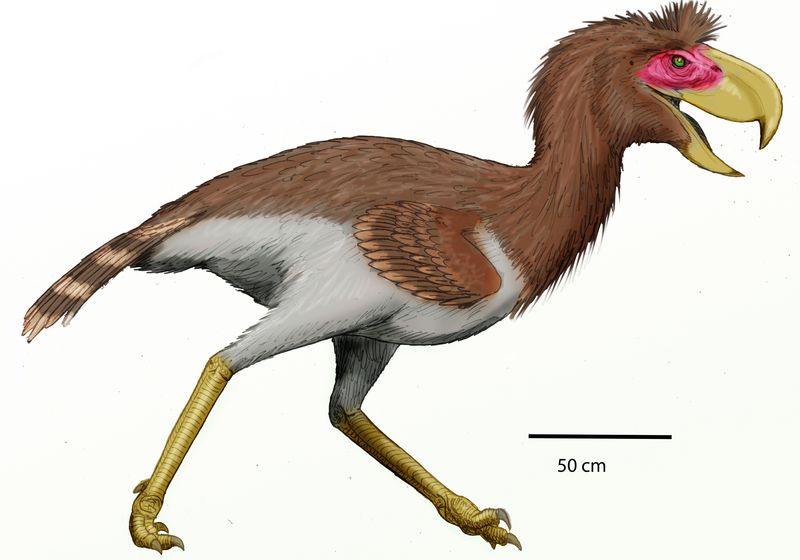
Terror birds, towering over most other creatures, dominated South American ecosystems after the dinosaurs. Flightless yet agile, they were apex predators with a potent beak.
These birds could run at incredible speeds, catching prey with lethal precision. Despite their dominance, they eventually faced extinction due to competition from mammalian predators. Terror birds illustrate the dynamic shifts in prehistoric ecosystems and the rise and fall of dominant species.
Helicoprion
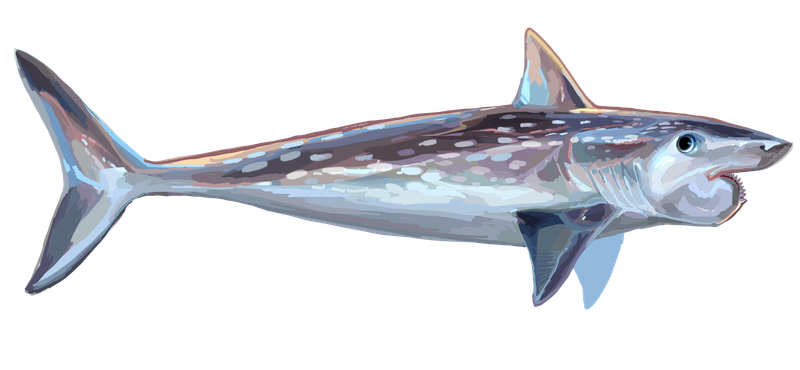
Helicoprion, with its bizarre spiral jaw, prowled the Permian seas. This ancient shark-like creature’s teeth spiraled into a coil, a feature unique in the animal kingdom.
The exact function of its spiral jaw is still debated, with theories ranging from slicing soft-bodied prey to crushing shells. Its peculiar anatomy has intrigued scientists for decades. The Helicoprion is a testament to the strange and wonderful evolutionary paths life has taken.
Giant Ground Sloth (Megatherium)
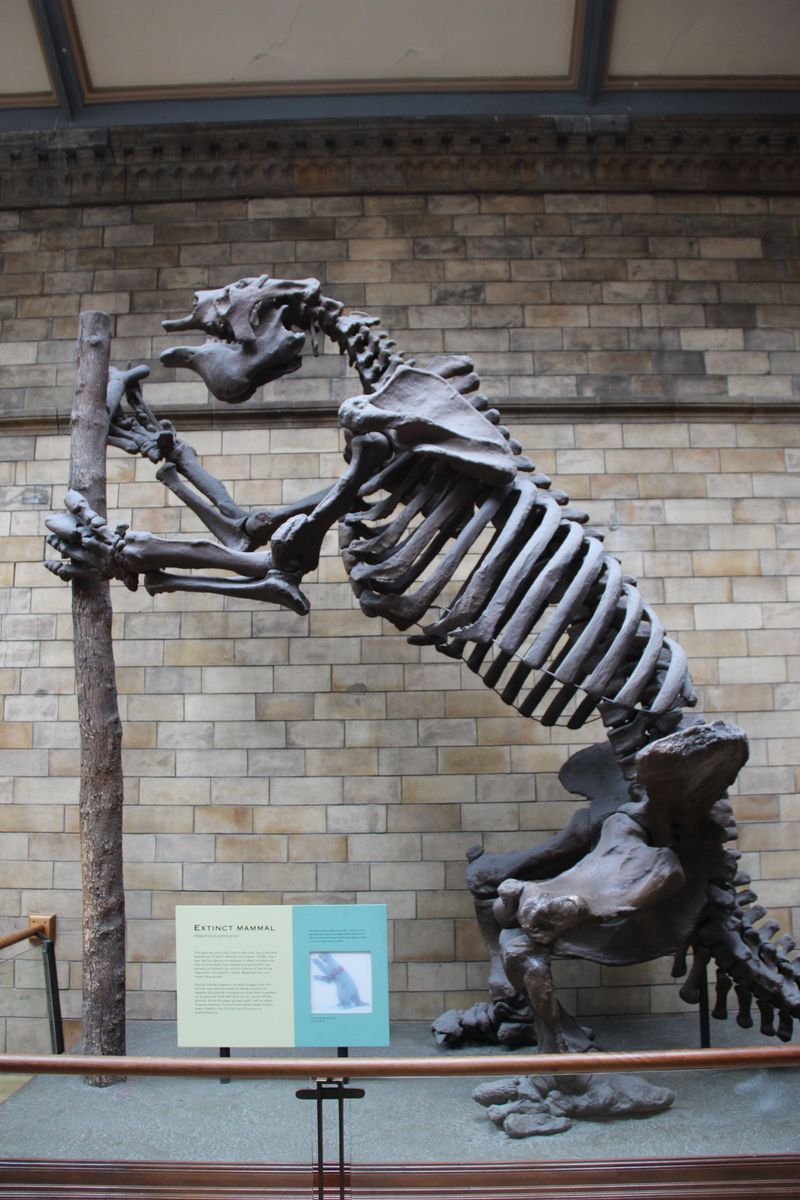
The giant ground sloth, Megatherium, was a massive herbivore that once roamed South America. Standing over six meters tall, it could reach high vegetation easily.
Its slow-moving nature and size meant it had few predators. However, human hunting likely contributed to its extinction. The giant ground sloth underscores the impact of human activity on megafauna and the delicate balance of prehistoric ecosystems.
Tarpan
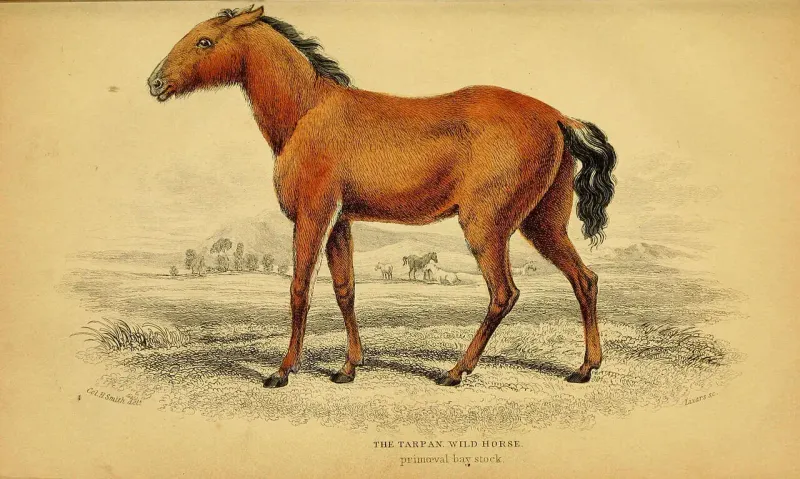
The tarpan was a wild horse species that once roamed the steppes of Europe. Known for its sturdy build and distinctive mane, it adapted well to harsh climates.
Unfortunately, due to hunting and habitat encroachment, the tarpan went extinct in the wild by the late 19th century. Efforts to reintroduce similar horses have been made, but the original tarpan remains lost to time. This horse serves as a reminder of the fragility of wild species in the face of human expansion.
Basilosaurus
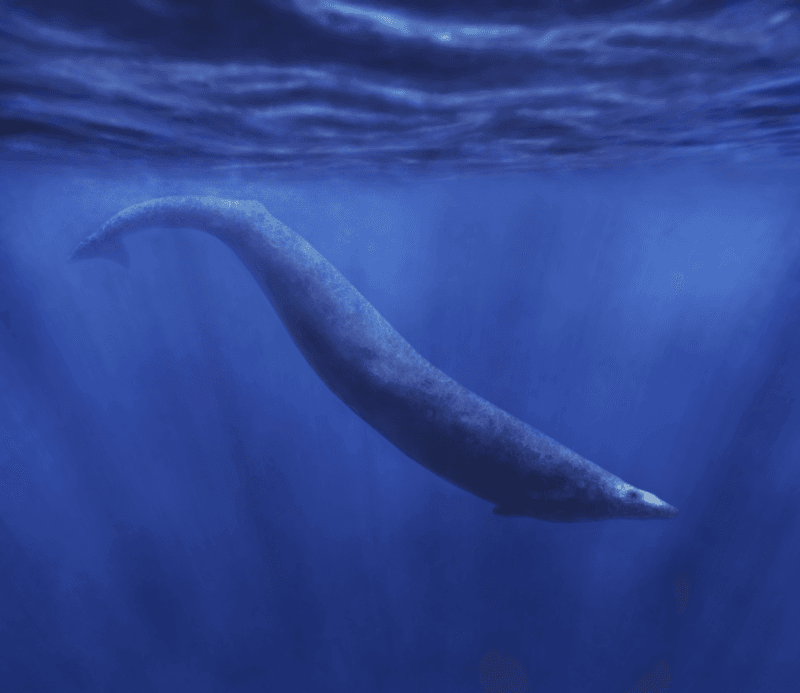
Basilosaurus was a massive, serpentine whale that swam the ancient Tethys Sea. Despite its name meaning “king lizard,” it was indeed a mammal.
Its elongated body and vestigial limbs suggest a transition from land to sea. As a top predator, it played a crucial role in its ecosystem. The Basilosaurus exemplifies evolutionary adaptations and the rich tapestry of life in Earth’s past.
Pyrenean Ibex
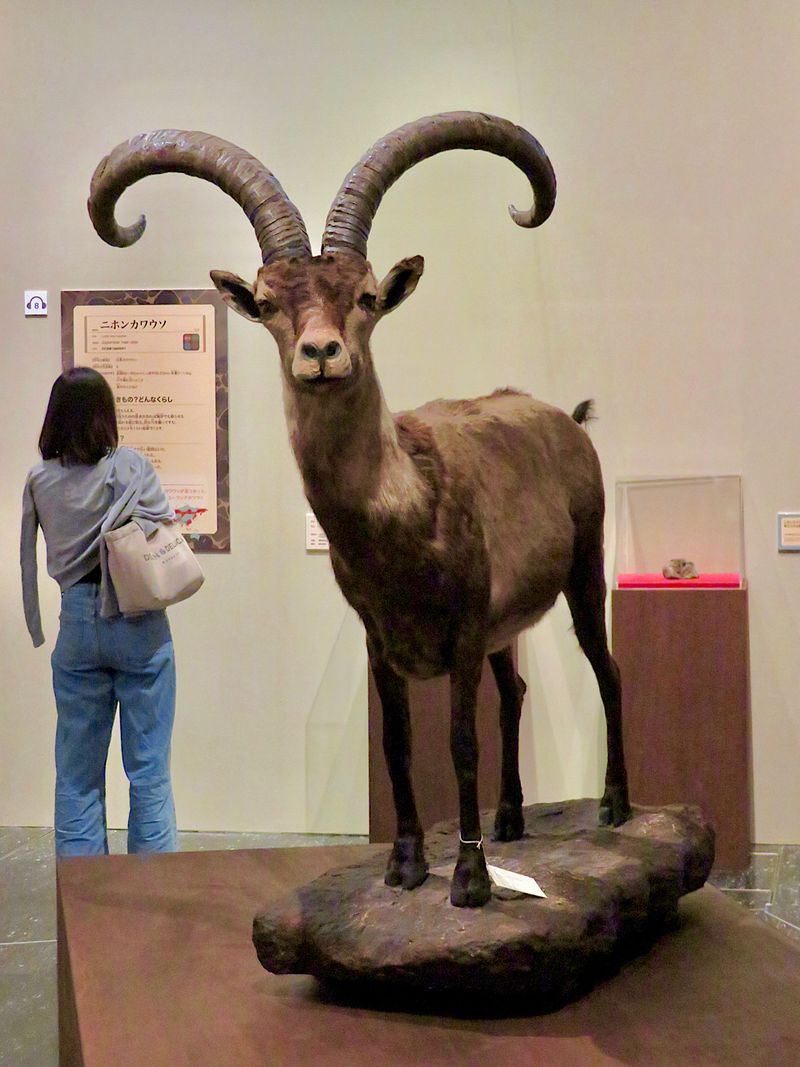
The Pyrenean ibex, a type of wild goat, inhabited the rugged mountains of the Pyrenees. Known for its impressive horns and agility, it navigated steep slopes with ease.
Sadly, due to overhunting and habitat loss, the Pyrenean ibex became extinct in the early 21st century. Efforts to clone the species met with limited success. The story of the Pyrenean ibex is a poignant lesson in conservation and the irreversible consequences of human actions.

